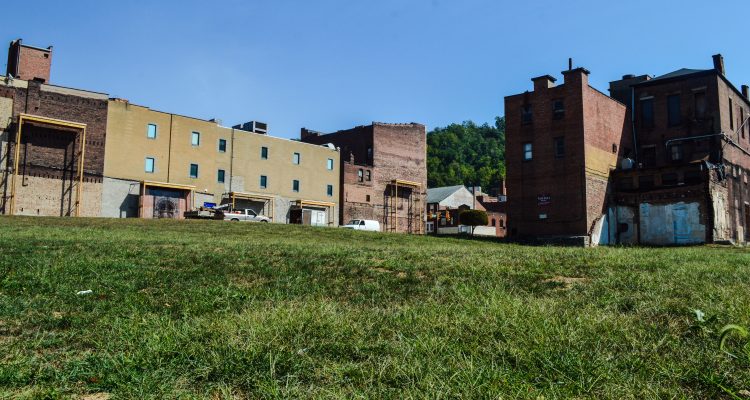The owners of the structures were not actively marketing the properties, and they also were not protecting the interiors from the evils of Mother Nature. Floors were collapsing on the inside, and bricks were falling on the outside at the time Wheeling’s elected officials voted in favor of purchasing six buildings within the 1100 Block of the downtown district.
After marketing buildings for a few years to anyone who wished to see inside them, city council members and Mayor Andy McKenzie voted in favor of demolishing the former homes of G.C. Murphy, Rite Aid, Juniper, Feet First, River City Dance Works, Velez Dentistry, and Howard’s Diamond Center. The razings began in April 2012, and today the space is lush with green grass and an art project called “Passages: Peggy’s Park.”
The park, funded by the Hess Family Foundation, will provide an illuminated walkway and benches, and will feature large-scale vinyls of photographs of several historic Wheeling structures. Storyboards will tell the tales involving each of the buildings. The park can be disassembled and moved if and when a developer enters into an agreement with the city of Wheeling, but as of today that is not the reality.
The Regional Economic Development Partnership along with the municipality recently funded the taking of soil samples in the area, but McKenzie said the activity was a part of the marketing process.
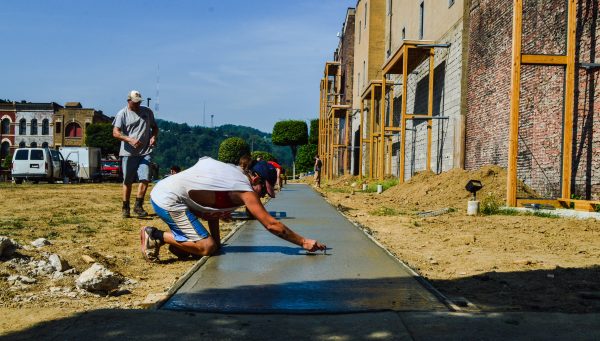
“We have taken calls from interested parties, and the soil-sample was one of the first questions that have been asked,” the mayor explained. “There’s nothing definite at this time, and that’s why the new park continues to move forward, but the phone has been ringing. People are very interested in several areas of downtown Wheeling.
“That was the goal when we voted in favor of purchasing them, and then voting in favor of the demolition project. Nothing was going to happen in that area with those buildings, and we found that out as we conducted tours through them,” he continued. “There were asbestos issues and roofing issues, but in the end of cost of redeveloping those buildings was just too much to people who toured them, so now that area is wide open for something new.”
The total cost for the building purchases and the demolitions amounted to $1.8 million. The structure in the best condition at the time the razings began was the former home of G.C. Murphy’s, but McKenzie said the cost to bring that structure up to current building and safety codes would have cost as much as $4 million.
“Years ago the private sector used to build buildings that would last a century, but that’s not what the private sector is interested in these days,” he said. “The building materials have changed; the federally mandated codes are much different than they used to be; and the cost to construct the newer buildings is far less than what someone pays to redevelop.
“It was a tough decision. It really was because a lot of people had a lot of memories in those stores, but the decision was made with potential and safety in mind,” added McKenzie, who is now in his final year of his second term as the Friendly City’s mayor. “I believe something will take place with those properties, and I’m not talking about 10 years from now.”
Like what?
The mayor would not reveal who has called or details about what is possible because the conversations, McKenzie said, are “very preliminary.” But it has allowed some city officials and residents to contemplate the possibilities.
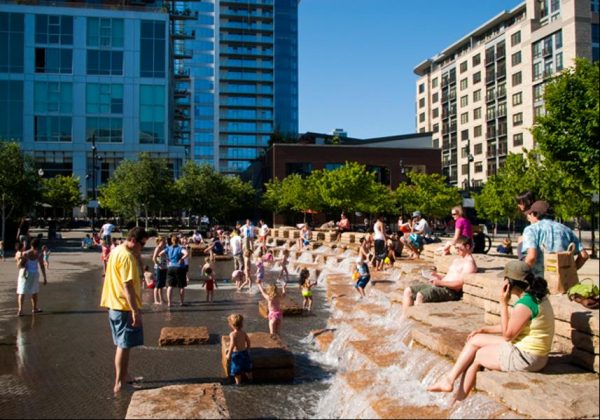
Jeremy Morris, executive director, Wheeling National Heritage Area Corp.; candidate, Ward Two City Council:
“On the 1100 Block, I would like to see public input into ideas of what could happen at the space. It is the center of our downtown and has the potential to become a defining element of our community in much the same way that Pullman Square has become in downtown Huntington.
“In the years since the demolition, I have had a number of interesting conversations regarding what the space could be — ideas that range from a new city hall to the most technologically advanced public library in the state. With a blank canvas we have the opportunity to drive the conversation that creates a showpiece of a place. We should be surveying all ideas in the community as a starting point for its redevelopment. Use proven placemaking design concepts to insure it is a space that residents will cherish.
“A public space like Jamison Square in Portland, Ore., would drive foot traffic to the downtown. These ‘splash pad’ type public spaces require no programming to be successful; no one has to hire a band, book a movie, or organize a festival to draw people to the place. The water comes on, and parents and children show up. It is a serious investment, but it could have serious benefits as well. People need a reason to passively spend time in the downtown; right now, most people are downtown for work or a business transaction. They generally leave as soon as their business in the district is done.”
Don Atkinson, Ward Five Councilman:
“I’m glad that, finally, people are now realizing that L.S. Good, Murphy’s, and other former businesses aren’t coming back. I do like to save historical buildings and believe we should do that to preserve the history of the city and the area; those buildings in the 1100 Block were empty 25-30 years before they were torn down.
“What we have now is prime spot for just about anything, and as a councilman I know we as a city will work with anyone who would like to be there in the future. Business, residential, or anything else that keeps Wheeling moving forward would be a positive addition, my opinion. There’s a lot of fresh excitement in the downtown district right now, and I’m proud to be a part of it, and I believe the 1100 Block is a vital part of the downtown’s future. Ideally, I would like to see some kind of retail on the lower level of anything constructed in that area, and I also would like to see residential above those retail developments.
“One thing we all know is that there are plenty of ideas. We just need someone to pull the trigger.”
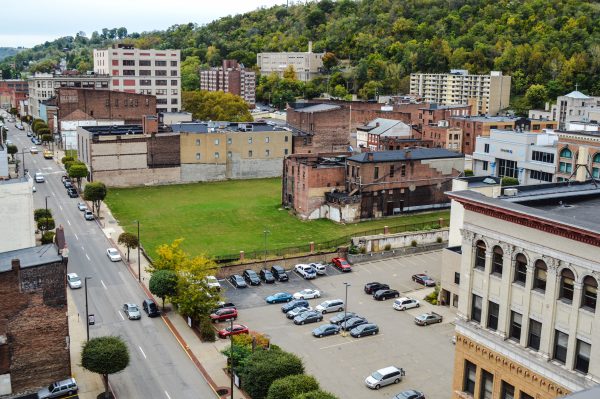
Glenn Elliott, owner of The Professional Building; candidate for Mayor of Wheeling:
“I look at the 1100 Block in two very distinct ways. On the one hand, it’s instructional, in that you had several historic buildings demolished on grounds that it would be cheaper and more marketable for prospective developers. On the other hand, it’s an obvious opportunity in that you have a sizable lot in the center of downtown that can be used in a variety of ways.
“I’m generally not someone who dwells on the past, but I do think it helps to look at what city policies and investments have paid dividends. To date, it’s difficult for me to believe that the $1.8 million spent to acquire and demolish those 1100 Block buildings has been recovered. Why? Because eight years after acquisition and three years after demolition, we still have an empty lot that looks very unintentional. And in reality we have spent more than $1.8 million. Why? Because when you tear down a qualifying historic building, you lose millions of dollars in federal and state historic preservation tax credits and matching grants. And so my preferred approach would have been for the City to acquire and stabilize those structures to give prospective developers the opportunity to ascertain whether adaptive re-use or demolition made the most sense. Developers tend to be far better at making these determinations than cities.
“But the buildings are gone, and the empty lot is there, so it’s important now to focus on the possibilities. I would love to see new developers work with the city and RED to build something grand there. There is considerable need for a high-end downtown hotel, and the central location of this property is perfect for that. But only time will tell if such a plan can be put in place. At some point though, if the developers won’t bite, we need to look at converting the mostly flat space there into a public park – think of it as Wheeling’s Central Park. With trees, a central fountain, benches, and targeted recreational areas, we could leverage what’s already going on with the ‘Passageways’ project to create an aesthetically pleasing, intentional public place.”
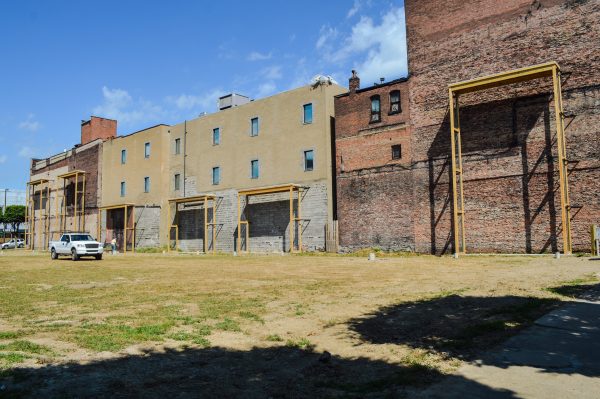
David Miller, Ward Four Councilman:
“The 1100 Block of downtown remains one the premier locations in downtown and the entire Ohio Valley. The city of Wheeling and some of our economic partners continue to promote this parcel for economic development. Our goal is to get this property into the hands of a private entity that will ensure a more populous and vibrant downtown.
“Whether commercial or residential, we are confident that this tract of downtown will once again be a productive contributor to downtown Wheeling.”
Charlie Ballouz, retired downtown resident; candidate, Ward Two:
“I was upset at the time the demolitions were taking place because the city leaders didn’t have a plan for the future for that area, but now that those buildings are gone, I would like to see something take place in the 1100 Block. With more and more people moving to the downtown area, the residents are going to need more amenities like a grocery store.
“I have lived in downtown Wheeling for more than 30 years, and very little progress has been made despite the loss of many businesses. If the city leaders wish for more people to live in the downtown area, more apartments and more services should be added in that area in the future.”
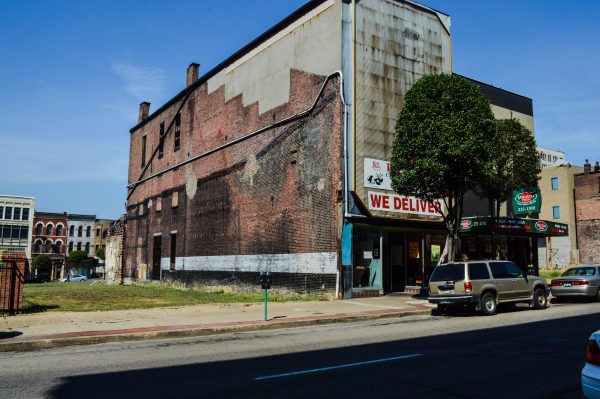
Wendy Scatterday, Wheeling Architect; candidate, Ward Four:
“The Citizens of Wheeling own the 1100 Block of downtown Wheeling. Our tax dollars bought the property — yours, mine, and ours. As a result we need to be considered ‘The Clients’ of any redevelopment planning and design, place-making process that occurs for that important location within our downtown. We can’t get back what was demolished there, but the 1100 Block is still the ‘heart of downtown Wheeling,’ not only geographically, but also as the spirit of our community on the whole.
“The 1100 Block needs to be designed so that it is a place people want to be in. That happens by a relentless pursuit of engaging the public in a fully inclusive, innovative, community oriented, place-making design process that continuously invites and welcomes active input from the public at all steps along the way. The type of design that creates the most meaningful places is a design that incorporates public and private spaces that are easy to find and access. Those well designed places don’t just happen; they are the result of research, response to input, and willingness to understand the location it is connected to, as well as its context. The redevelopment must make a positive contribution to the life of the community it is within.
“Successfully designed indoor and outdoor spaces are walk-able / bike-able / wheelchair friendly, safe, well lit, colorful, interactive, and engaging with the visitor to the place, the resident residing, the worker utilizing the space, the child learning, or the senior sitting and relaxing. Outdoor spaces where people spend their time are spaces that provide a mix of shaded and sunny spots, trees and open space, plantings and walkways to meander through, with playful water features and open fountain activities, along with public art, including pieces that move and respond to their environment such as wind sculptures or other unique attributes of the people & the place.
“Certainly any new indoor spaces are an opportunity for the 1100 Block to address current retail services that are available now only by car or bus for most residents, such as a groceries, household items, clothing, hardware, books, cleaning supplies, and stationery just to name a few. All of these types of businesses should be locally owned and operated and located on the street levels in a variety of storefront sizes complemented by local eateries and unique destination shops of all kinds. Additionally, the upper portions of any new indoor spaces should provide ample places for other types of business and education, as well as diverse residences in both sizing and pricing, ownership and rental with secure subterranean parking.”
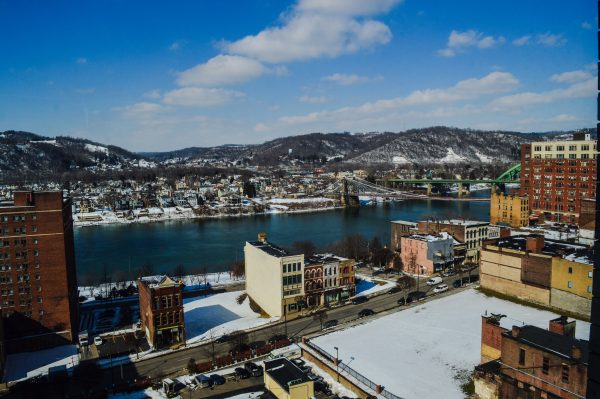
Gene Fahey, Ward 6 Council representative and Vice Mayor:
“I was a very strong advocate for this city council of the purchase, eventual demolition, and posturing for potential development of the 1100 Block, which I feel strongly will come to fruition soon. It is absolutely poised now for new life, and serious inquires and discussions continue for development.
“Knowing that this development will occur was also part of the decision for the rehabilitation of the Upper Market Plaza as well as the development of Heritage Park to its west. I believe it will be these decisions of reinvestment that will allow the downtown area to continue to prosper. It is a combination of business and residential opportunities along with culture and entertainment that is making this area so desirable.
“The future of the 1100 Block, in my opinion, is development so it can once again be used for commerce and potentially a mixture of commerce and housing. I would be surprised if we are not seeing something being constructed in that area during the next two years.”
(Photos by Steve Novotney)


